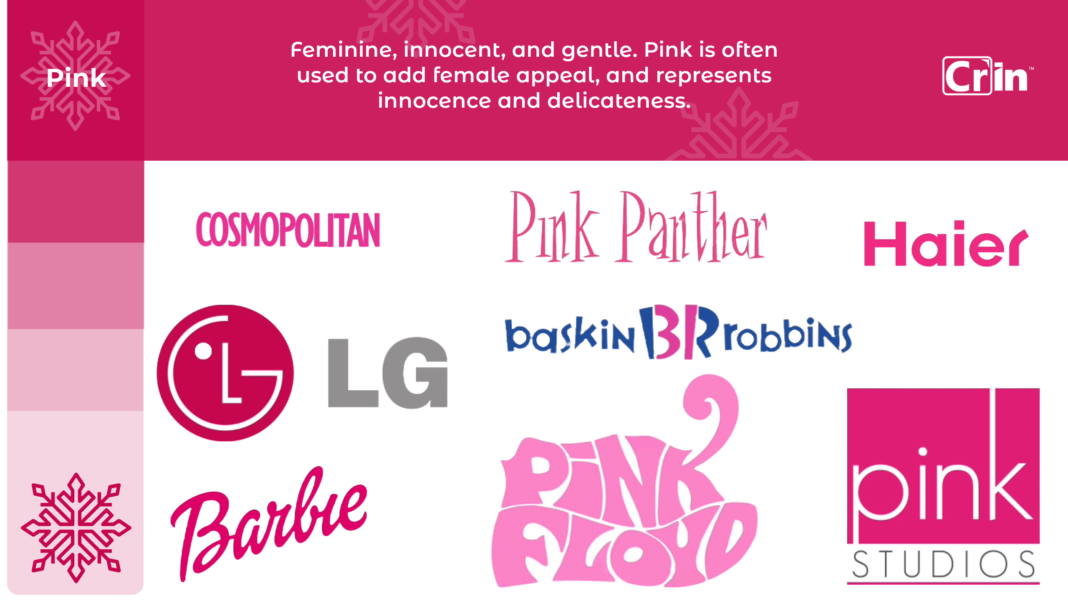The Significance of Pink Color in Branding :
Pink, often considered a color of tenderness and compassion, holds immense significance in branding strategies across various industries. Understanding the role of color psychology and incorporating pink strategically can profoundly impact brand identity and consumer engagement.
Importance of Color Psychology :
Color psychology plays a crucial role in branding, influencing consumer perceptions and behaviors. Pink, associated with traits like sensitivity, nurturing, and playfulness, evokes emotions of warmth and tranquility. Brands leveraging pink effectively can convey messages of empathy and care, fostering stronger connections with their audience.
Pink Color in Marketing Strategies
In marketing, the use of pink can be strategic, especially in industries targeting predominantly female demographics. Its association with femininity and romance makes it a powerful tool for products and services catering to these segments. However, pink’s versatility allows it to transcend gender stereotypes, making it suitable for diverse branding purposes.
Understanding the Impotency of Pink
Historical Perspective
Historically, pink has undergone shifts in symbolism and cultural significance. From its association with masculinity in the early 20th century to its adoption as a feminine color post-World War II, pink’s meanings have evolved. Understanding these historical connotations aids in crafting nuanced branding strategies.
Modern Interpretations
In contemporary branding, pink embodies inclusivity and authenticity. Its soft hues convey a sense of approachability and openness, appealing to modern consumers seeking genuine connections with brands. By embracing pink, businesses can communicate values of diversity and acceptance.
Incorporating Pink in Branding Strategies
Brand Identity
Integrating pink into brand identity involves more than just selecting a color palette. It requires aligning with the brand’s core values and personality. Whether used subtly or prominently, pink should resonate with the brand’s narrative and target audience, reinforcing its identity.
Target Audience Engagement
Understanding the preferences and psychographics of the target audience is crucial when incorporating pink into branding strategies. By conducting thorough market research, businesses can tailor their messaging and visuals to resonate with their audience, fostering deeper engagement and brand loyalty.
Psychological Impact of Pink on Consumers
Emotional Associations
Pink elicits a range of emotions, from nurturing and compassion to excitement and optimism. Brands can leverage these emotional associations to create impactful marketing campaigns that resonate with consumers on a deeper level. By tapping into the psychological effects of pink, businesses can evoke desired responses and strengthen brand affinity.
Gender Stereotypes
While traditionally associated with femininity, pink’s significance goes beyond gender stereotypes. Modern branding challenges these conventions, embracing pink as a color that transcends traditional boundaries. By redefining its symbolism, brands can appeal to a broader audience while promoting inclusivity and diversity.
Utilizing Pink to Create Memorable Branding
Creating Visual Impact
Pink’s visual appeal makes it a powerful tool for creating memorable branding experiences. Whether used in logos, packaging, or marketing materials, pink can capture attention and leave a lasting impression on consumers. Its versatility allows for endless creative possibilities, enabling brands to stand out in crowded markets.
Establishing Brand Personality
Pink can help define a brand’s personality, conveying traits like warmth, sincerity, and sophistication. By incorporating pink strategically, businesses can shape perceptions and evoke specific emotions in their audience. Whether aiming for a playful vibe or a more refined image, pink offers ample opportunities for brand differentiation.
Case Studies and Success Stories
Pink in Fashion Industry
In the fashion industry, pink has been synonymous with femininity and glamour. Luxury brands like Victoria’s Secret have successfully capitalized on pink’s allure, using it to create aspirational imagery and cultivate a sense of exclusivity among consumers.
Pink in Beauty and Cosmetics
Beauty brands often leverage pink to evoke feelings of elegance and sophistication. Companies like Sephora use pink packaging to signal quality and luxury, appealing to discerning consumers looking for premium skincare and makeup products.
Overcoming Challenges and Misconceptions
Breaking Gender Stereotypes
One of the challenges in utilizing pink in branding is overcoming entrenched gender stereotypes. However, progressive brands are challenging these norms by embracing gender-neutral branding strategies that celebrate diversity and individuality.
Handling Cultural Sensitivities
In multicultural markets, it’s essential to navigate cultural sensitivities when using pink in branding. While pink may symbolize different things across cultures, sensitivity and respect for diverse perspectives can help brands avoid unintended misinterpretations and foster inclusivity.



